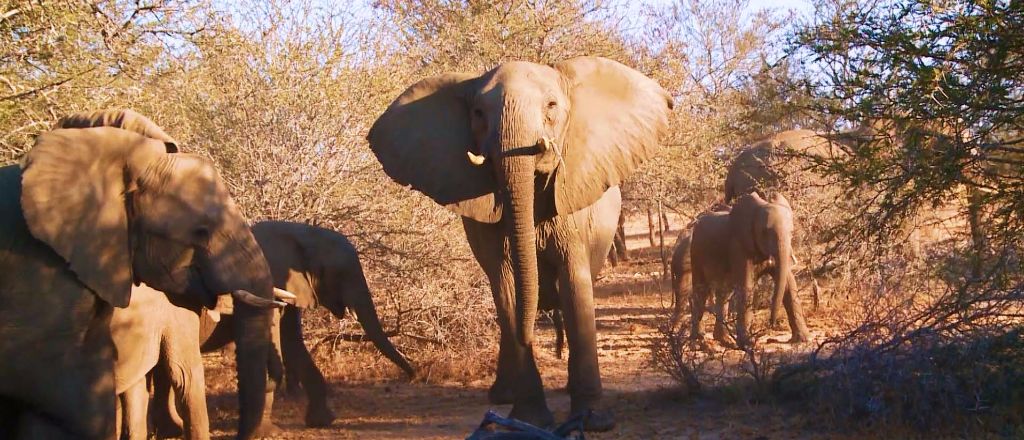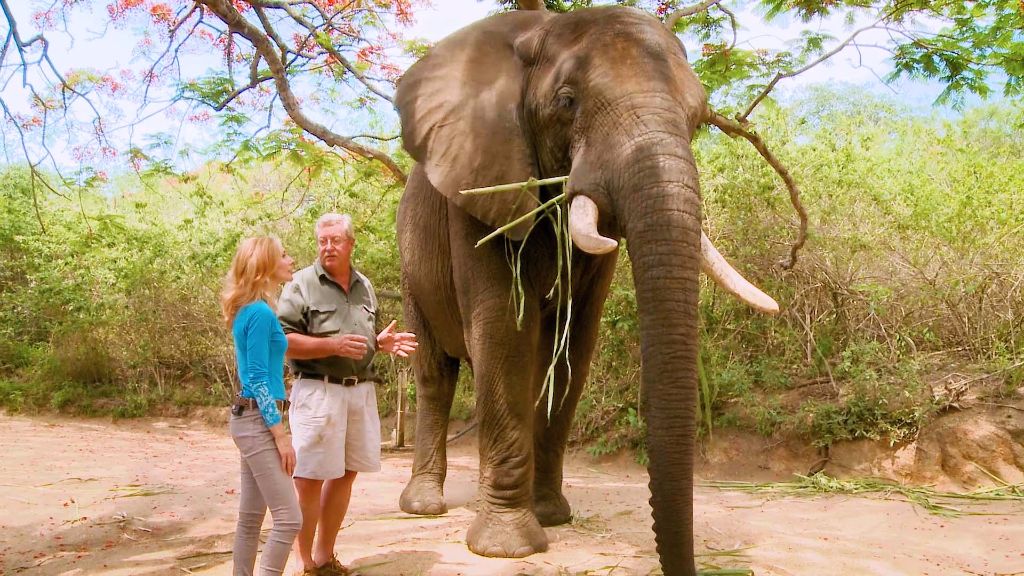About Elephant Whispers
Elephant Whispers grew from humble beginnings and the love of nature shared by Rory and Lindie Hensman in Zimbabwe. Wayward circumstance brought them to South Africa where they created Elephants For Africa Forever (EFAF). EFAF grew into a one of kind experience which Linda herself embarked on, which allows humans to have one of a kind interactions with these gentle giants.

To visit the Elephant Whispers website and see all of what they have to offer, click the image above.
At Elephant Whispers (EW), you can safari and interact with these intelligent creatures and their trainers. But EW is so much more. They partner with scientists and veterinarians alike to research and learn more about these amazing creatures as well as ways to protect them from humans. EW also partners with local schools, and programs to uplift the surrounding community.

Elephant Fun Facts
- African elephant populations are sometimes thought to differ only by the location of the animals, but, evolutionarily speaking, forest and savannah elephants are as separate genetically as Asian elephants and woolly mammoths.
- The elephant’s closest living relative is the rock hyrax, a small furry mammal that lives in rocky landscapes across sub-Saharan Africa and along the coast of the Arabian peninsula.
- African elephants are the largest land mammals on the planet, and the females of this species undergo the longest pregnancy—22 months.
- Despite their size, elephants can be turned off by the smallest of critters. One study found that they avoid eating a type of acacia tree that is home to ants. Underfoot, ants can be crushed, but an elephant wants to avoid getting the ants inside its trunk, which is full of sensitive nerve endings.
- Elephants don’t like peanuts. They don’t eat them in the wild, and zoos don’t feed them to their captive elephants.
- Female elephants live in groups of about 15 animals, all related and led by a matriarch, usually the oldest in the group. She’ll decide where and when they move and rest, day to day and season to season.
- Male elephants leave the matriarch groups between age 12 and 15. But they aren’t loners—they live in all-male groups. In dry times, these males will form a linear hierarchy that helps them avoid injuries that could result from competing for water.
- Asian elephants don’t run. Running requires lifting all four feet at once, but elephants filmed in Thailand always kept at least two on the ground at all times.
- An African elephant can detect seismic signals with sensory cells in its feet and also “hear” these deep-pitched sounds when ground vibrations travel from the animal’s front feet, up its leg and shoulder bones, and into its middle ear. By comparing the timing of signals received by each of its front feet, the elephant can determine the sound’s direction.
*These fun facts curtesy of The Smithsonian and their sources. Visit below;
http://www.smithsonianmag.com/science-nature/14-fun-facts-about-elephants-14572816/





No Comment